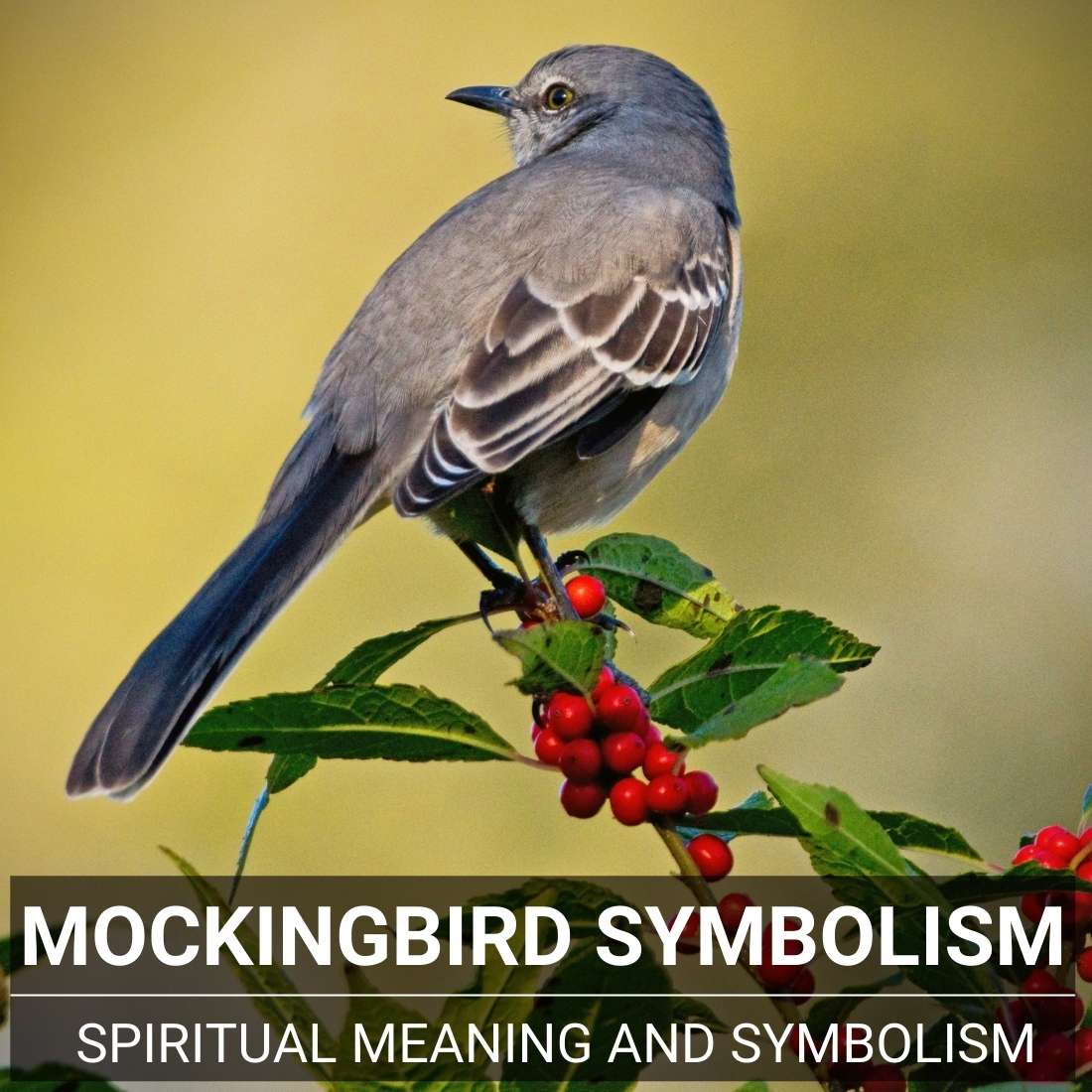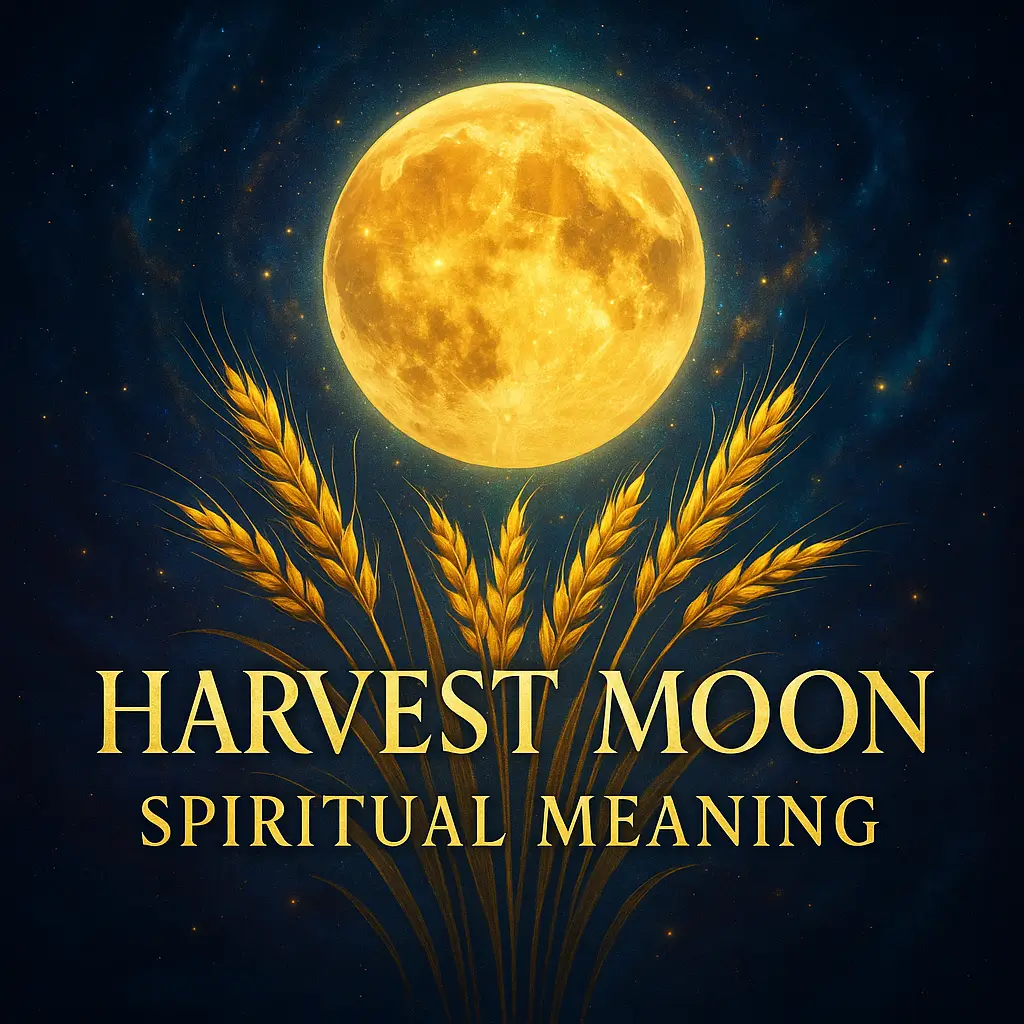Table of Contents
- 1 Key Takeaways
- 2 What does a mockingbird symbolize?
- 3 The Mockingbird’s cultural significance
- 4 Different Mockingbirds and their spiritual meaning
- 5 Mockingbird Attraction, Identification, and Common Questions
- 6 Top 10 Most Incredible Facts About the Mockingbird and Their Spiritual Meaning
- 7 Conclusion
- 8 FAQs
- 8.1 What does the Mockingbird symbolize in literature?
- 8.2 What is the significance of the Mockingbird in “To Kill a Mockingbird”?
- 8.3 What cultural significance does the Mockingbird have?
- 8.4 How has the Mockingbird been used in popular culture?
- 8.5 What can the Mockingbird teach us about life?
- 8.6 What does a mockingbird symbolize in literature?
- 8.7 How do mockingbirds represent righteousness?
- 8.8 What spiritual meaning does the Northern Mockingbird carry?
- 8.9 Why are mockingbirds considered divine messengers in some cultures?
- 8.10 What does a mockingbird symbolize as a spirit animal?
- 8.11 What warning does the mockingbird’s mimicry represent?
- 8.12 How do different mockingbird species vary in their symbolic meanings?
Key Takeaways
- Mockingbirds symbolize innocence and vulnerability in literature, most famously in Harper Lee’s novel where harming them represents destroying the innocent.
- These birds represent righteousness and protection, inspiring us to defend those who cannot defend themselves and to maintain our moral values even in challenging circumstances.
- Their ability to mimic other birds serves as both a warning about blind imitation and a reminder that learning through observation can help us develop valuable skills and adaptability.
- In various cultural traditions, mockingbirds are viewed as divine messengers, symbols of harmony, and carriers of peace, encouraging collaboration and community building.
- Different species like the Northern, Tropical, and Blue Mockingbird each carry unique spiritual meanings related to resilience, independence, loyalty, and the ability to thrive in challenging environments.
Passive Yet Aggressive: Why The Mockingbird Symbolism Is No Laughing Matter
Have you ever wondered why killing a mockingbird is a sin? As an experienced expert in this area, I can help you gain a deeper understanding and appreciation of this meaningful symbol.
Discover why the mockingbird’s symbolic significance has captured the hearts and minds of literature enthusiasts, bird watchers, and even lawyers alike.
This article will provide a comprehensive analysis of the mockingbird symbolism, which will not only enlighten you about its significance but also help you understand how it can be applied in your life.
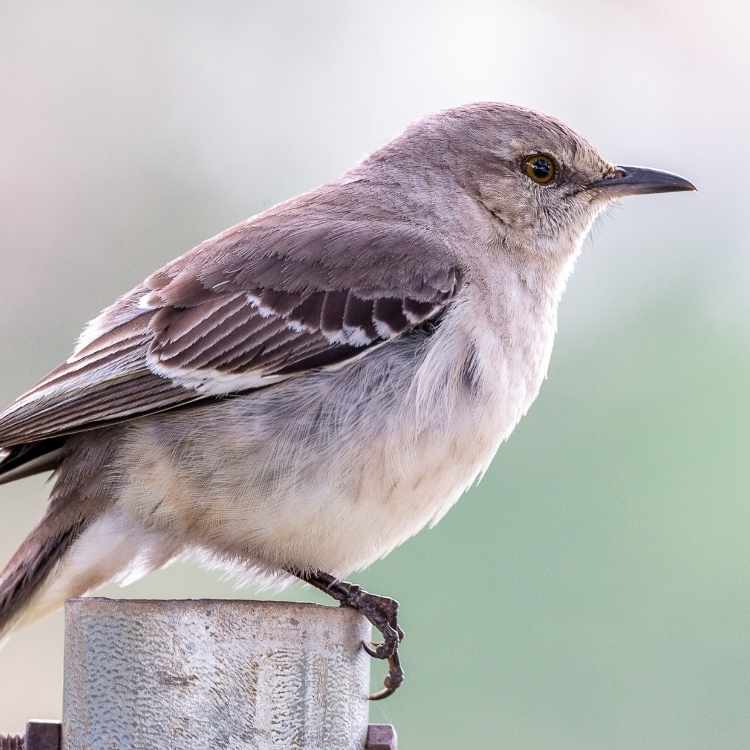
“Mockingbirds don’t do one thing but make music for us to enjoy. They don’t eat up people’s gardens, don’t nest in corncribs, they don’t do one thing but sing their hearts out for us.”
– To Kill A Mockingbird, Novel
What does a mockingbird symbolize?
Recognized for their tuneful voice and courage to protect their young, mockingbirds are seen by many as carriers of comfort, stability, and freedom.
A popular image of playfulness, ingenuity, and amusement, here’s a look at what the mockingbird represents and how its message can make our lives meaningful.
Righteousness
Mockingbirds are often seen as harmless and delightful animals due to their beautiful songs. They can inspire us to maintain a positive outlook on life and stay optimistic, even in difficult situations. In a world that can be harsh and challenging, observing mockingbirds can remind us to stay true to our values and strive for righteousness.
Having the mockingbird spirit animal in our lives makes it easier for others to trust and confide in us. These birds’ presence helps us be more open to changes, allowing us to cope effectively with stress and experience life with better satisfaction.
Mimicry
Admired for their ability to mimic other birds’ songs and sounds, mockingbirds warn us about the dangers of imitating others without fully understanding the consequences of their acts. They remind us that we should only copy those who bring out a better version of us.
However, the mockingbird also tells us that imitation can be a tool to learn new skills and behaviors. By copying others, we gain their skills in a particular area and acquire helpful knowledge and insights.
They also enhance our ability to build rapport and fit into various social environments.
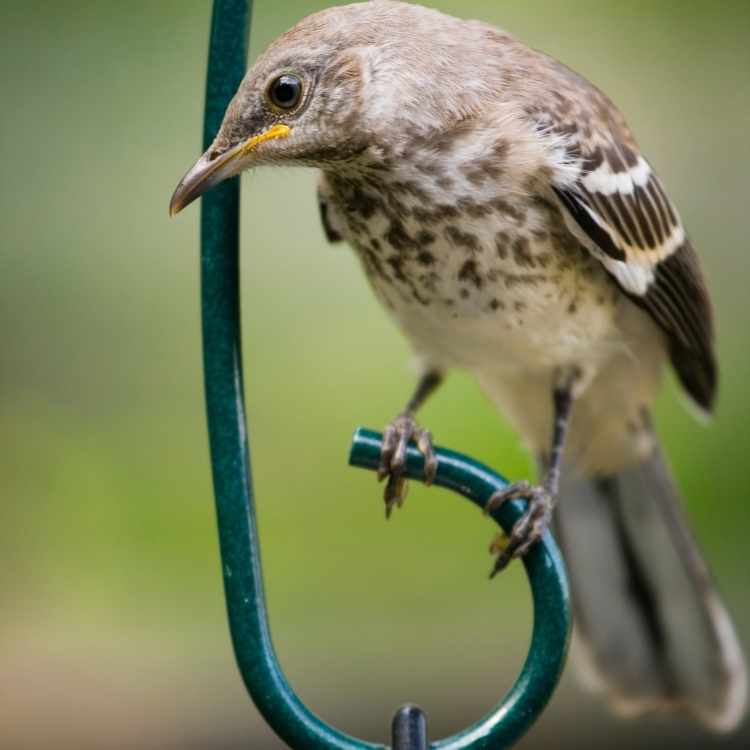
Sacrifice
Several traditions see mockingbirds as selfless creatures who sacrifice themselves to protect their young. It symbolizes our willingness to sacrifice to protect weaker or more vulnerable people.
By helping strengthen our spiritual and emotional fortitude, the mockingbird helps us develop perseverance, self-discipline, and resilience. They motivate us to push ourselves through difficult situations, which helps us face future challenges more effectively.
Protection
Naturally protective of their nest, mockingbirds are viewed as a symbol of protection for those who are defenseless. By encouraging us to help or protect others, we feel a sense of satisfaction that greatly improves our overall well-being and fulfillment.
In the novel “To Kill a Mockingbird” by Harper Lee, the lawyer Atticus Finch reminds his children never to harm or kill a mockingbird because all they do is make music and sing.
It was often interpreted as a symbol of protection for those who are vulnerable, which helps build trust and strengthen our relationships with others.
The Mockingbird’s cultural significance
While almost every bird can chirp, call, or tweet, only a few can carry a tune and make an impression on their peers. Soaring above us to bring many remarkable messages, let’s swoop down and look at the importance of mockingbirds in culture.
| Culture | Symbolism |
|---|---|
| Native American | In some Native American cultures, the mockingbird is considered a messenger between the world of the living and the spirit world. It is also associated with intelligence and cunning. |
| Chinese | In Chinese culture, the mockingbird is seen as a symbol of happiness and good fortune. It is believed that hearing the bird’s song can bring joy and positive energy. |
| Greek | In Greek mythology, the mockingbird is associated with the god Apollo, who was said to have transformed the bird’s feathers from white to the current gray-brown color. The bird is also seen as a symbol of sacrifice and rebirth. |
| Southern U.S. | In the Southern United States, the mockingbird is considered a symbol of hospitality and friendliness. It is also the state bird of Arkansas, Florida, Mississippi, Tennessee, and Texas. |
| British | In British literature, the mockingbird is often used as a symbol of innocence, purity, and beauty. It is also associated with the idea of imitation, as mockingbirds are known for mimicking the sounds of other birds. |
Mythology and folklore
In Native American culture, mockingbirds are seen as divine messengers whose presence brings harmony, balance, and peace. Their presence indicated improved relationships between American Indian tribes and individuals.
The Native Americans believe mockingbirds appear to positively affect productivity and inspiration. They inspire people to work together in a collaborative environment and help everyone feel engaged and motivated.
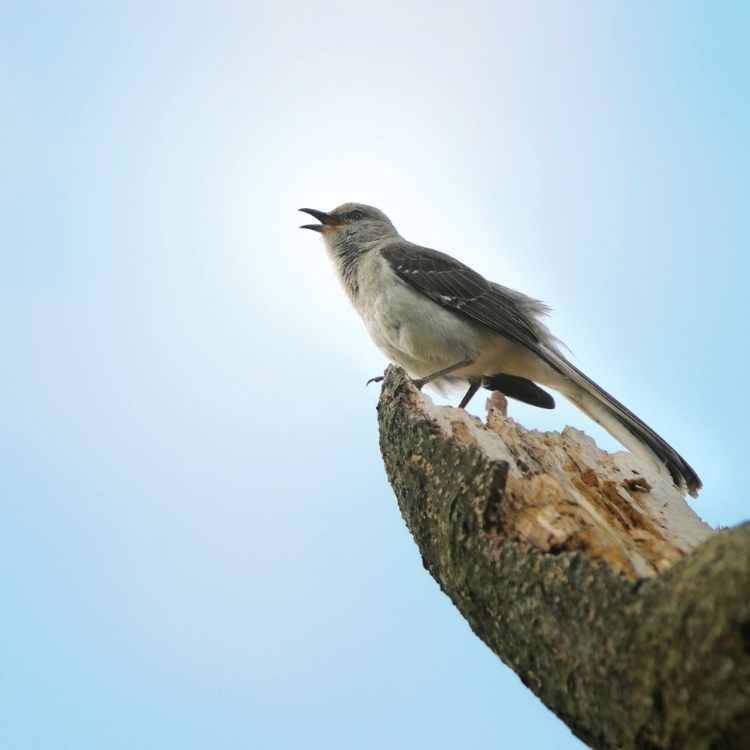
Arts and music
Revered for its ability to mimic sounds and belt out delightful songs, the mockingbird is often celebrated for its creative and musical significance. Prominent in various genres such as country, folk music, and blues, they encourage us to develop a sense of community and connection with others.
As many artists, including The Grateful Dead and James Taylor, have written songs about them, the mockingbird reminds us of the importance of music in expressing and celebrating our vast cultural heritage.
Literature
Perhaps one of the most popular novels of all time, Harper Lee’s “To Kill a Mockingbird” is often associated with beauty, purity, and innocence.
It tells the story of two young children, Scout and Jem Finch, as they explore the complexities of race and justice. The story unfolds when their lawyer father, Atticus Finch, is appointed to defend a black man named Tom Robinson.
Themes of courage, justice, and compassion are identified throughout the novel as Scout and Jem face the world’s realities. The story tells us that kindness and hope can still be felt even when faced with great adversity and that all we need is to hold on to our sense of decency and morality.
Different Mockingbirds and their spiritual meaning
Famous for emulating other birds’ calls, the mockingbird’s spiritual meaning guides us in showing traits and behaviors that others can look up to and imitate. Recognized as highly respected birds in various cultures and traditions, we look at the different mockingbirds and what they spiritually mean.
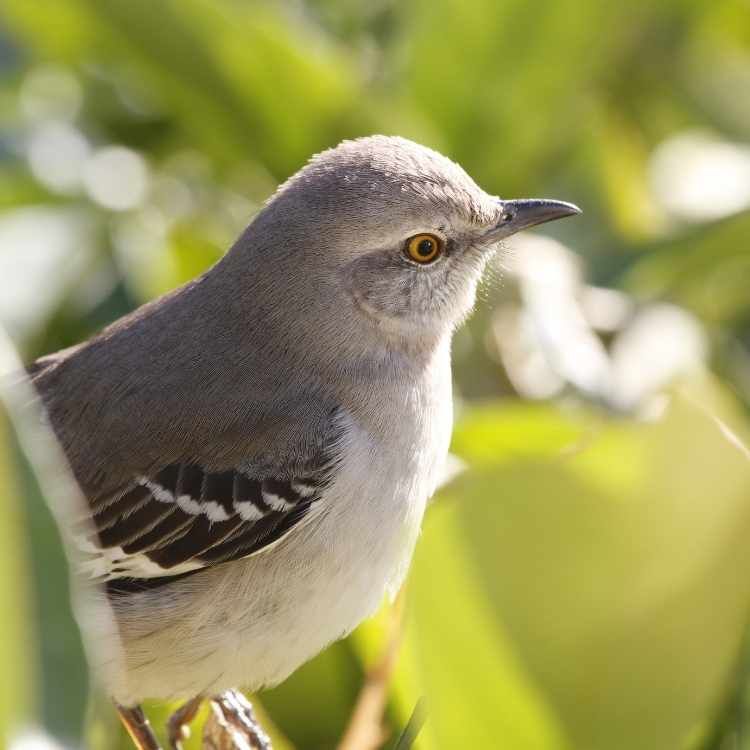
The Northern Mockingbird
As the state bird of five states in the US, the Northern Mockingbird is accepted as a symbol of adaptability, flexibility, and resilience. Its wide range of calls and songs has led many to associate them with talent and creativity.
The Northern Mockingbird enables us to withstand unexpected difficulties and challenges. They help us quickly adjust our strategies and bounce back from setbacks.
Tropical Mockingbird
Prominently found in South America, the Tropical Mockingbird’s ability to fly long distances to migrate is symbolic of our need for independence and our pursuit of finding our path in life. They give us the courage to take responsibility for all our decisions.
Tropical mockingbirds help us develop a strong sense of ourselves and identify our own priorities, beliefs, and values. Their resilience during migration urges us to pursue our goals, leading to a better sense of satisfaction and fulfillment.
The Blue Mockingbird
A resident of Central America and Mexico, the blue mockingbird’s devotion to its family has long made it a symbol of love and fidelity. They teach us the importance of being faithful to our promises and commitments, creating a foundation of security and trust in our relationships.
Blue mockingbirds remind us that loyalty is a reflection of our principles and integrity. These strong flyers help enhance our sense of self-respect and appreciation of others.
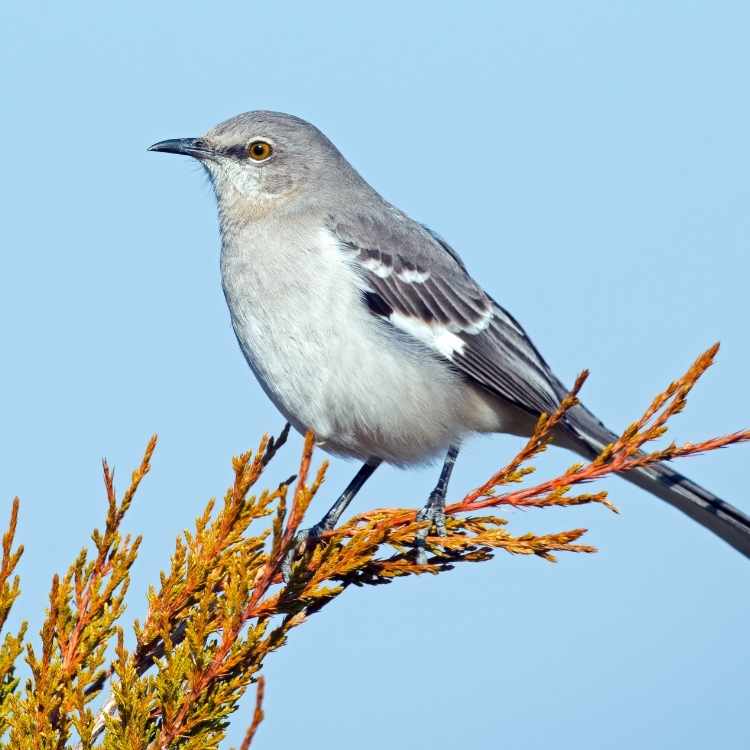
Bahama Mockingbird
An esteemed symbol of peace and harmony, the Bahama Mockingbird’s melodious songs are believed to bring tranquility to those who hear them. Its presence is known to reduce anxiety, enabling us to better cope with stressful situations and control our emotions.
The Bahama Mockingbird enhances our mental focus and enables us to concentrate on tasks and think more clearly. Additionally, those who experience serenity are more likely to be positive, joyful, and content.
Galapagos Mockingbird
Recognized as a cheerful inhabitant of the Galapagos Islands, this lighthearted mockingbird symbolizes adaptation and survival. They enhance our ability to do well and thrive in the harshest and most isolated environments.
The Galapagos mockingbird helps us adapt to changing circumstances and easily handle various tasks. Giving us the ability to perform various tasks opens us to greater career advancements and opportunities.

Mockingbird Attraction, Identification, and Common Questions
While understanding the symbolic significance of mockingbirds is enlightening, many people are also interested in the practical aspects of these fascinating birds. From spotting them in your backyard to recognizing their distinctive features, let’s explore some common questions and facts about these melodious creatures.
How to Attract Mockingbirds to Your Garden
Wondering how to attract mockingbirds to your garden? These adaptable birds are drawn to landscapes with open grassy areas and scattered shrubs. Plant native berry-producing bushes like mulberry, blackberry, or holly, which provide both food and shelter. Mockingbirds aren’t typically seed eaters, preferring fruits, berries, and insects, so traditional birdseed may not entice them. A shallow birdbath can be particularly attractive, as mockingbirds enjoy regular bathing. Unlike some birds, mockingbirds aren’t typically endangered, but they do benefit from welcoming, pesticide-free environments where they can forage naturally.
Mockingbird Identification: Images and Characteristics
Identifying a mockingbird can be rewarding for bird enthusiasts. When searching for mockingbird images or trying to draw a mockingbird flying, note their medium-sized bodies with grayish-brown upperparts and lighter underparts. Their distinctive white wing patches become visible during flight, creating a flashy display. Unlike the iridescent hummingbird, mockingbirds have longer tails and lack the hovering capability. Australian residents often mistake the similar-looking grey butcherbird for a mockingbird, though true mockingbirds are native to the Americas. The constellation Cygnus is sometimes informally called the “mockingbird constellation” due to its wing-like appearance when observed from certain perspectives.
Mockingbird Behavior: Fact vs. Fiction
Are mockingbirds mean? This common question stems from their territorial nature, especially during nesting season. While they can aggressively defend their territory against perceived threats—including humans who venture too close to their nests—this behavior represents protection rather than meanness. Fun facts about mockingbirds include their remarkable ability to memorize and mimic up to 200 different sounds, including other birds, insects, amphibians, and even mechanical noises. The phrase “blues ain’t no mockingbird” refers to the authenticity of emotions—unlike the mockingbird’s imitative songs, true blues come from genuine experience. The mockingbird feather meaning in some traditions represents communication and the importance of authentic self-expression, despite the bird’s reputation for mimicry.
Whether you’re considering a mockingbird tattoo meaning resilience and creativity, are curious about the northern mockingbird spiritual meaning of adaptability, or simply appreciate seeing these remarkable birds in your neighborhood, understanding mockingbirds enriches our connection to the natural world and the varied symbolism these vocal mimics have inspired across cultures and artistic expressions.
Top 10 Most Incredible Facts About the Mockingbird and Their Spiritual Meaning
The mockingbird is more than just a brilliant mimic—it’s a symbol of creative expression, protection, and emotional intelligence. Found in literature, folklore, and spiritual teachings, this small bird carries a big message: be true to your voice, stand your ground, and live with authenticity. Below are ten incredible facts about the mockingbird, each paired with the deeper meaning it holds for your spiritual path.
| Fact | Why It’s Incredible | Spiritual Meaning |
|---|---|---|
| Mockingbirds can mimic over 200 sounds | They imitate birds, insects, and even human-made noises. | Embrace your ability to adapt and communicate clearly. |
| They sing day and night—especially during a full moon | Some males even sing through the night when seeking a mate. | Speak your truth, even when it feels like no one’s listening. |
| They fiercely defend their territory | Known to dive-bomb predators much larger than themselves. | Protect your energy and boundaries with confidence. |
| Each bird has a unique song repertoire | No two mockingbirds sing exactly the same melodies. | Celebrate your individuality—your voice is uniquely yours. |
| They continue learning new songs throughout life | Their vocal range expands over time. | Growth is ongoing—never stop learning or evolving. |
| They symbolize innocence in literature | Most famously in To Kill a Mockingbird. | Let your kindness speak louder than judgment. |
| Mockingbirds have excellent memory for people and places | They can recognize individual humans. | Trust your emotional intelligence—it remembers what truly matters. |
| They use mimicry to confuse predators | Their imitations can trick threats into backing off. | Use creativity to navigate conflict—sometimes art is armor. |
| They thrive in both wild and urban environments | Found in forests, fields, and city backyards. | Adaptability brings resilience—root yourself wherever you are. |
| In Native American lore, they are teachers of song and speech | Revered as spiritual messengers and storytellers. | Honor your voice—it’s your sacred tool for connection. |
Conclusion
By singing a charming song that soothes the soul and provides peace of mind, the mockingbird holds many symbolic meanings that make it a wonderful spirit animal. Although their protective nature would sometimes make them extremely aggressive towards other creatures, their divine messages could explain why, as they say, “it is a sin to kill a mockingbird.”
FAQs
What does the Mockingbird symbolize in literature?
The Mockingbird is often used as a symbol of innocence, purity, and freedom in literature. It is a bird known for mimicking other birds’ songs and is often depicted as a harmless creature that doesn’t harm anyone. The Mockingbird is a popular symbol in works like Harper Lee’s “To Kill a Mockingbird.”
What is the significance of the Mockingbird in “To Kill a Mockingbird”?
In Harper Lee’s novel, the Mockingbird is a powerful symbol of innocence and vulnerability. It represents characters like Tom Robinson, who is falsely accused of a crime and ultimately dies for it, and Boo Radley, who is misunderstood and ostracized by society. The Mockingbird is a reminder of the dangers of prejudice and the importance of compassion.
What cultural significance does the Mockingbird have?
The Mockingbird is a bird native to North and Central America and has significant cultural significance in many indigenous cultures. In some traditions, the Mockingbird is believed to have healing powers; in others, it is seen as a trickster figure or a messenger of the gods. The Mockingbird is also the state bird of several U.S. states, including Texas and Florida.
How has the Mockingbird been used in popular culture?
The Mockingbird has been used in popular culture in a variety of ways. In addition to Harper Lee’s novel, it has appeared in other works of literature, such as “The Adventures of Tom Sawyer” by Mark Twain. The Mockingbird has also been referenced in songs by artists like Eminem and Carly Simon, and it has been used as the name for businesses, products, and organizations.
What can the Mockingbird teach us about life?
The Mockingbird can teach us the importance of kindness, empathy, and respect for others. It reminds us that everyone deserves to be treated fairly and that we should not judge others based on their appearance or background. The Mockingbird can also remind us to appreciate the natural world’s beauty and diversity and strive for harmony with the environment.
What does a mockingbird symbolize in literature?
In literature, mockingbirds primarily symbolize innocence and vulnerability. Their portrayal is most iconic in Harper Lee’s “To Kill a Mockingbird,” where harming these birds represents the destruction of innocence. The symbolism extends to represent people who are defenseless yet contribute positively to society.
How do mockingbirds represent righteousness?
Mockingbirds represent righteousness by inspiring us to defend those who cannot protect themselves. Their symbolic presence encourages standing up for justice and maintaining moral integrity even when faced with opposition or challenging circumstances. They remind us to protect the vulnerable.
What spiritual meaning does the Northern Mockingbird carry?
The Northern Mockingbird spiritually represents resilience, adaptability, and creative expression. Its ability to survive in various environments symbolizes perseverance, while its diverse song repertoire represents versatility and the ability to communicate effectively across different situations.
Why are mockingbirds considered divine messengers in some cultures?
In various cultural traditions, mockingbirds are viewed as divine messengers because of their remarkable vocal abilities. Their songs are believed to carry messages from the spiritual realm. They symbolize harmony and peace, encouraging community building and collaboration among people.
What does a mockingbird symbolize as a spirit animal?
As a spirit animal, the mockingbird symbolizes creative self-expression, adaptability, and finding your authentic voice. It encourages learning through observation while maintaining your unique identity. Those with mockingbird totems are often versatile communicators with the ability to navigate diverse social situations.
What warning does the mockingbird’s mimicry represent?
The mockingbird’s mimicry serves as a warning against blind imitation and losing one’s authentic self. While learning from others has value, the bird reminds us to maintain our unique identity rather than merely copying others. This symbolism encourages balanced learning and self-discovery.
How do different mockingbird species vary in their symbolic meanings?
Different mockingbird species carry unique symbolic meanings. The Northern Mockingbird represents resilience and adaptability, the Tropical Mockingbird symbolizes independence and warmth, while the Blue Mockingbird embodies loyalty and tranquility. Each species reflects different aspects of thriving despite environmental challenges.
